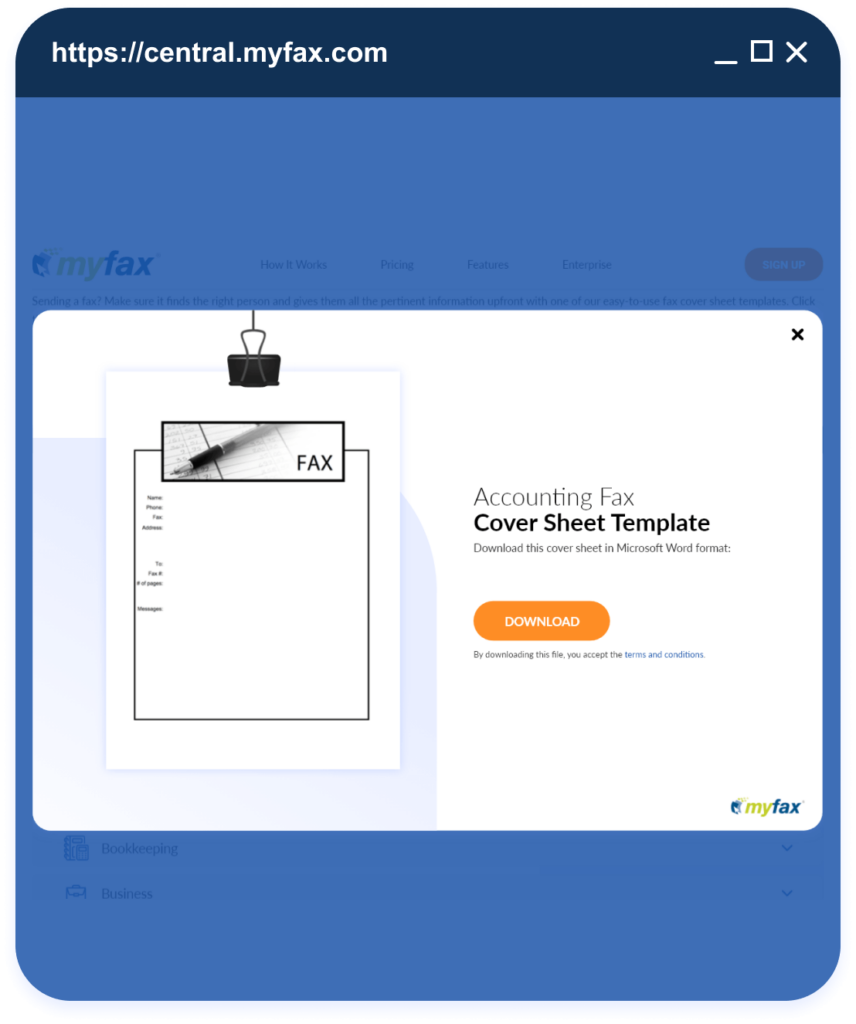How To Create a Confidential Fax Cover Sheet
No long-term contracts — cancel anytime!
Sometimes, you need to send private information in a fax. When you want to protect this information from prying eyes, a confidential fax cover sheet can help.
A confidential fax cover sheet lets anyone who sees it know that the fax is confidential. It also includes specific information about the recipient and document handling. In this guide, we’ll show you how to create a fax cover letter that looks professional and protects your fax.
What is a Confidential Fax Cover Sheet?
MyFax is an internet-based fax service provider that facilitates the transmission of faxes through a local, toll-free or international fax number. It was developed to provide a simple alternative to traditional fax machines.
MyFax provides busy professionals with the convenience and financial advantages that come with the ability to receive and send a fax online. Because everything is handled in the cloud, there is no need for any software or specialized equipment.
MyFax is loaded with various features that assist you in streamlining how your organization communicates. These include fax by email, archiving and sending fax online from up to five email addresses, faxing to 50 different fax numbers and accessing the MyFax mobile app to keep you on the go. Through its apps for Android and iOS, you can check your faxes and send and receive them from anywhere with your smartphone.
You can send or receive faxes in the convenient format of PDF files, which can be accessed, stored, printed, and sent without ever leaving your inboxes. The Fax Archive platform keeps incoming and outgoing faxes available to you at any time.
MyFax offers monthly and annual memberships, with customer service accessible by email support & chat, knowledge base articles and frequently asked questions.
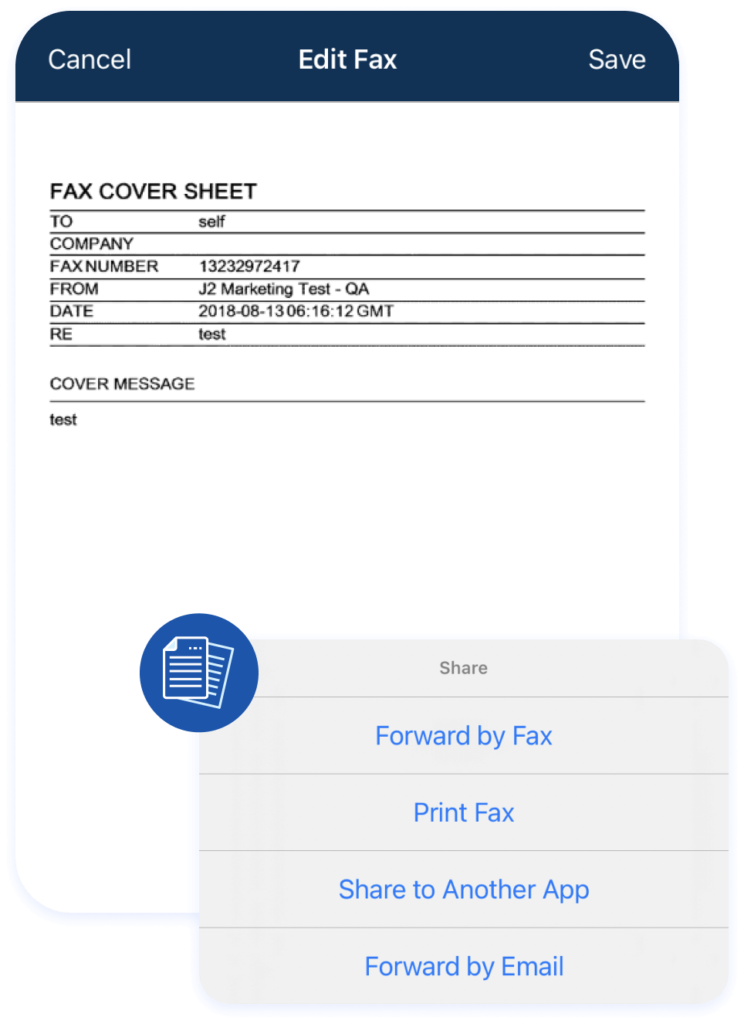
Create a Fax Cover Sheet for Confidential Documents in 7 Steps
It’s a good habit to send a cover sheet with any fax so the person who gets it knows what to expect. But it’s especially important when you’re faxing confidential documents. Documents like medical records or financial forms contain personal information you must protect.
The following steps will help you create an effective confidential cover sheet.
Put a bold header at the top of your confidential fax cover sheet, and label it as “Confidential.” This catches the recipient’s attention and sets the tone for the following sensitive information.
The header often includes a subject line, like in an email, to give the recipient an idea of the fax’s content. The subject should be a short, general description of what’s in the attached documents.
For instance, if you’re sending legal documents, you might choose a subject line like “Confidential: Legal Contract for Project X.” This helps the receiver understand the fax is important. It also tells them to handle it carefully.
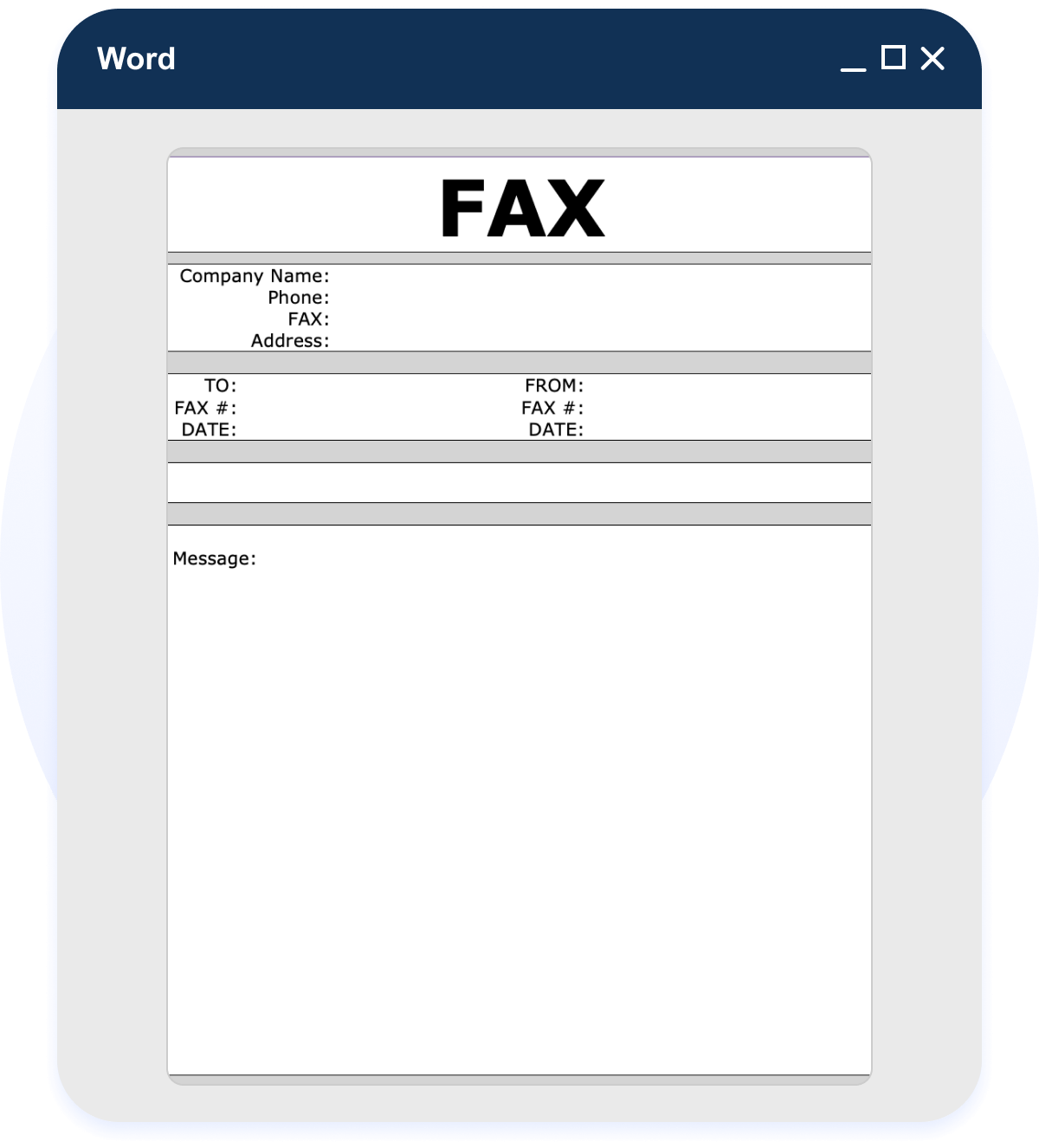
Include the intended recipient’s information on the fax cover sheet. This leaves no doubt about who should receive the fax. Put in details such as the recipient’s name, position, department, fax number, and 10-digit phone number.
Placing this information in a noticeable location on the cover sheet takes away the guesswork for the person receiving the fax. They’ll know exactly where to send the fax. It makes it far less likely that someone unauthorized will get your fax. The more accurate and detailed you are in identifying the intended recipient, the higher the chances your fax will end up where it should be.
If you aren’t sure about the recipient’s fax number, you can look it up using the search bar in online telephone directories, a 411 telephone look-up site, a phone company website, or the phone book. If you know the recipient’s fax number but are missing other information, you may be able to find it with a reverse phone search option. This lets you do a phone number search and can even tell you if a number belongs to a traditional fax machine or a personal cell phone with caller ID.
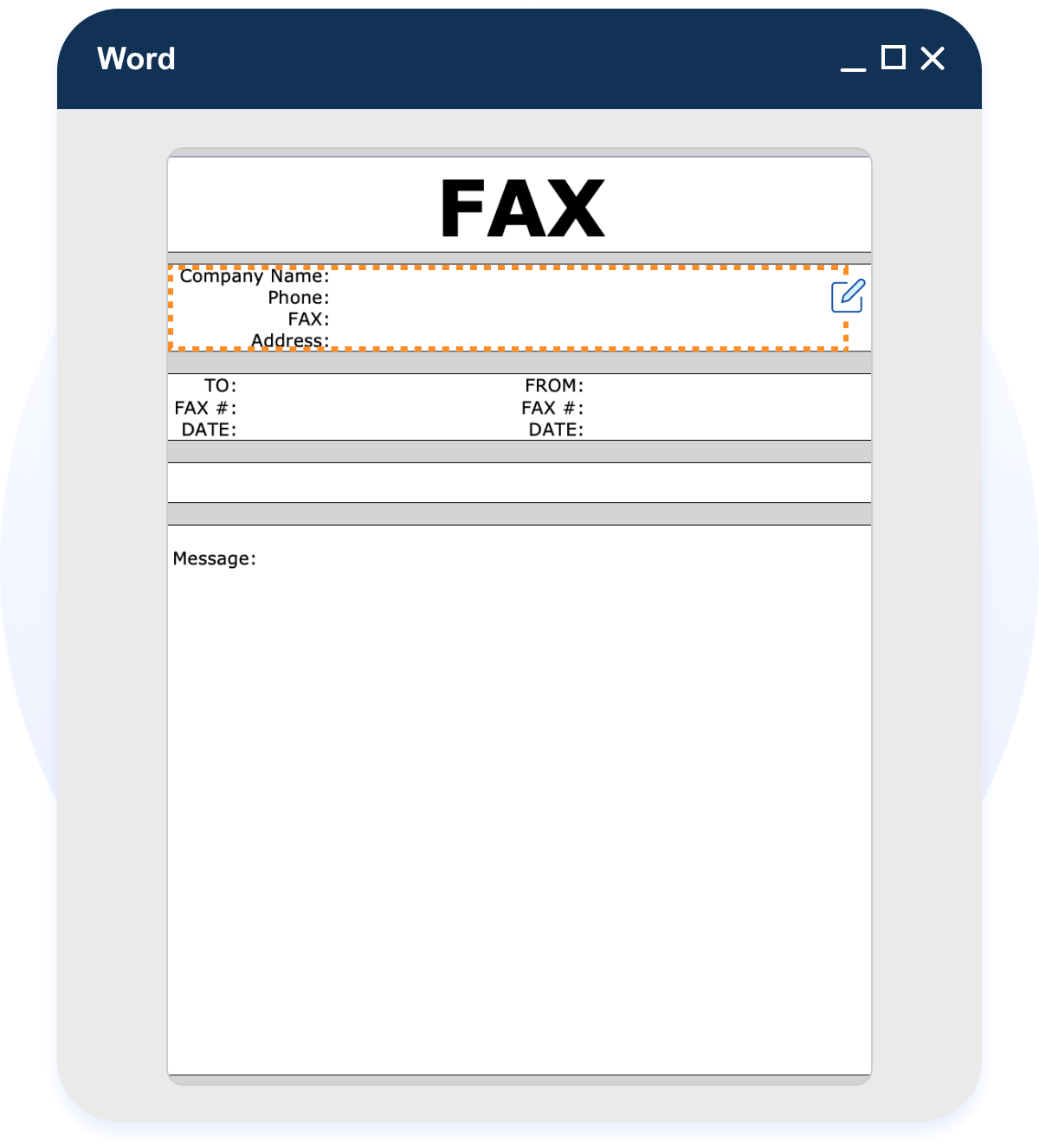
Include the date and time of the fax transmission on your confidential fax cover sheets. You should do this for several reasons. First, it creates a timestamp that verifies when you send the document. This sets a clear timeline for both legal and record-keeping reasons.
Second, the recipient can use this information to confirm that the fax arrived on time according to their fax settings. This is particularly important if the document includes time-sensitive information or deadlines.
Place the date and time in a visible area near the recipient’s information. Anyone handling the fax should quickly identify the time of sending. Adding this seemingly minor detail increases accountability. It also helps maintain the integrity of your confidential document and provides an audit trail.
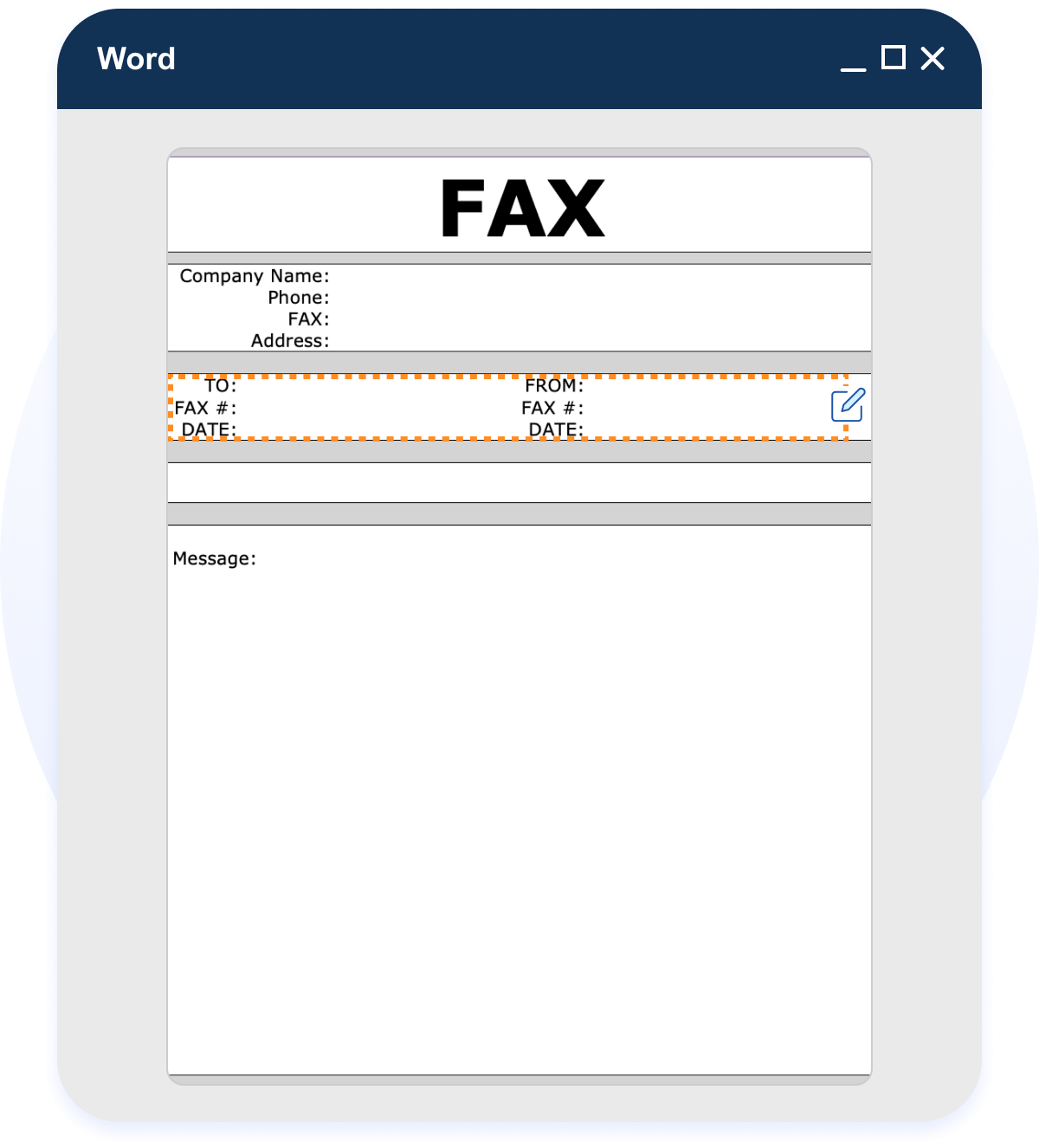
Add a brief message to your fax cover sheet to summarize the key points of the attached document. This allows the recipient to understand the purpose of the fax without opening it. It also helps them rank the fax according to the importance of the message.
Keep your message short but informative. Cover the document’s goal, urgent deadlines, or specific actions the receiver should take. Put this message below the recipient’s information and above any special handling instructions on the cover letter fax.
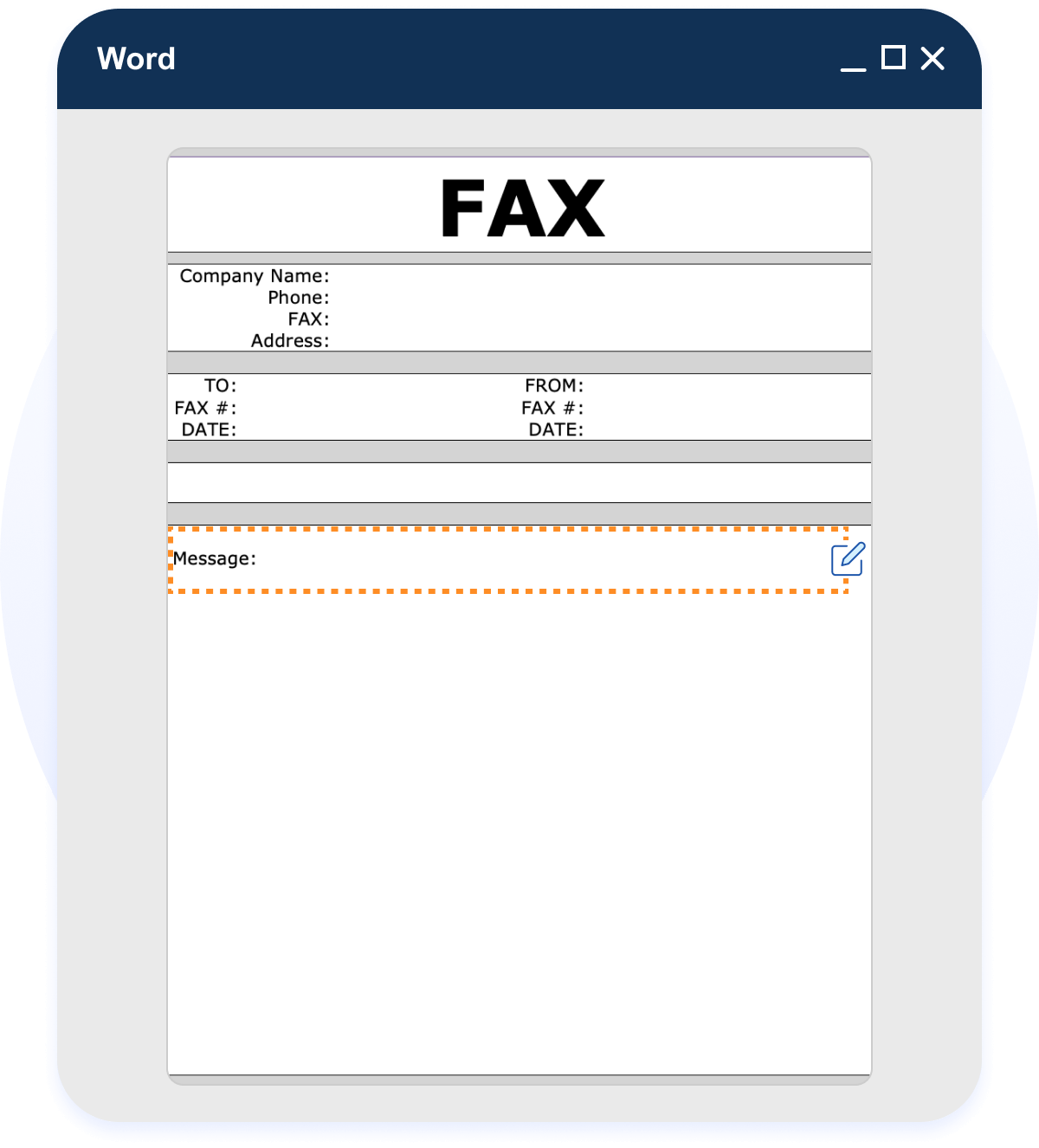
Specify the total number of pages in the fax, including the cover sheet, in a marked section. This helps the recipient be sure they’ve received the entire document. It also makes it easier for them to see if any pages are missing or out of order.
This information becomes crucial for lengthy or complex documents. For example, a single missing page in a legal contract could change the document’s meaning.
Place this detail near the date and time or close to the brief message you’ve included.
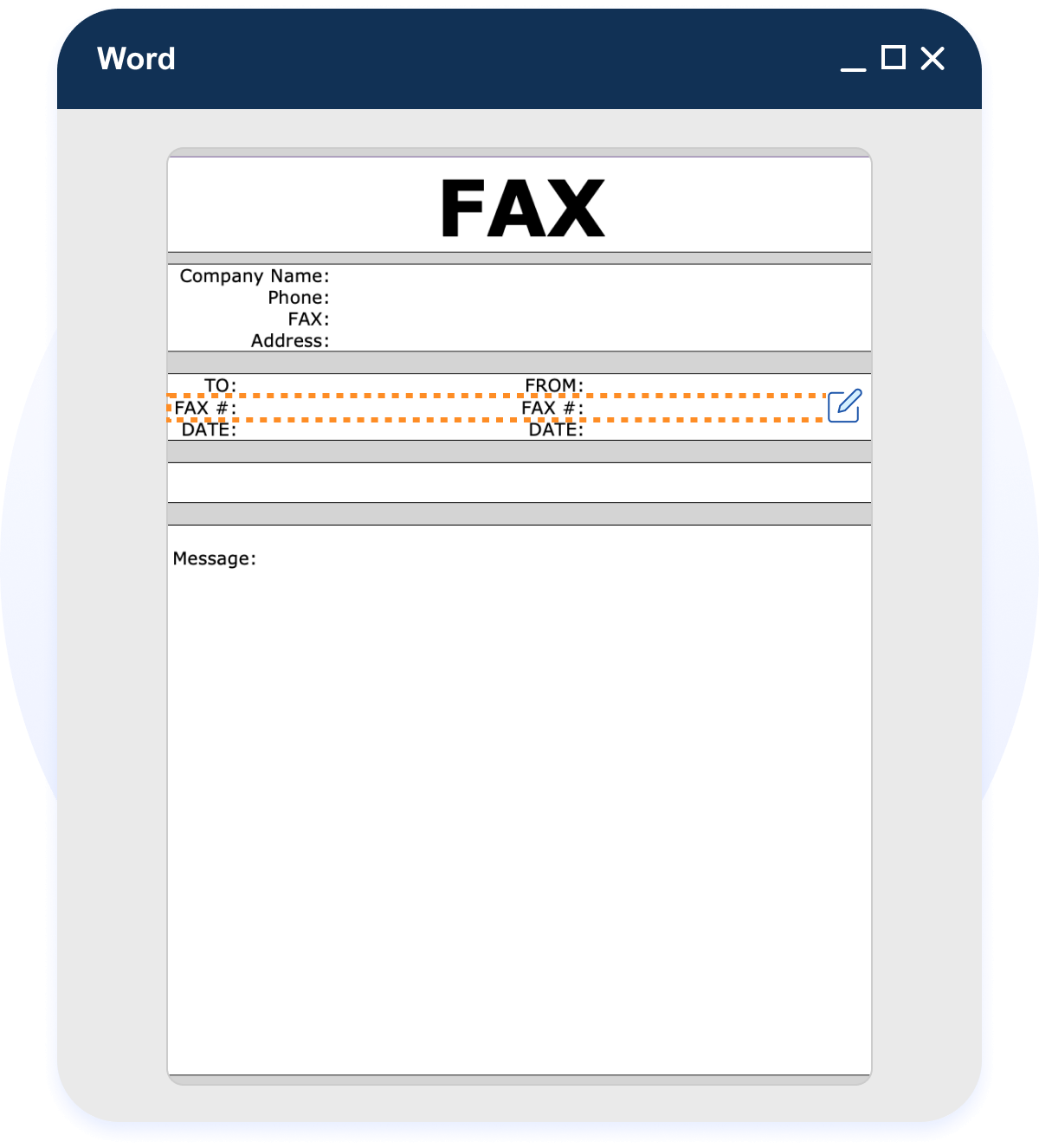
Remember to add a fax confidentiality statement on your fax coversheet. This emphasizes that the receiver should protect the documents. A confidentiality notice informs the receiver to keep the fax private. It also tells them not to read the fax if they mistakenly received it.
Use specific language, like “This fax contains confidential information intended solely for the individual or entity named above. Unauthorized disclosure, copying, or distribution is prohibited.”
Place this fax cover sheet confidentiality statement in a prominent place. For example, you can put it near the bottom of the cover sheet or in a footer.
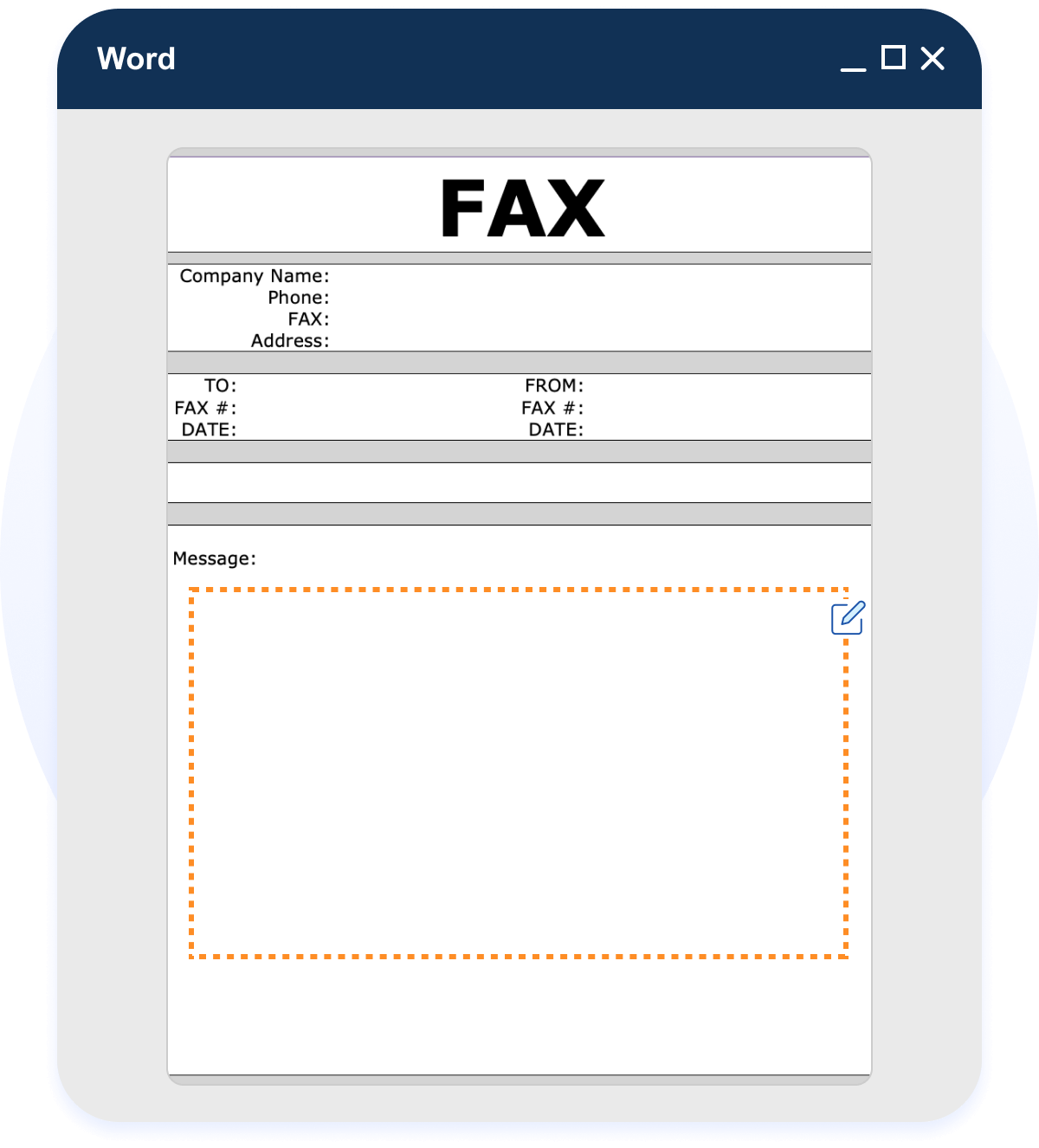
Finally, include your contact information as the sender at the top or bottom of the fax cover sheet with a confidentiality statement. Provide details such as your name, position, department, phone number, and fax machine number.
The sender information lets the recipient contact you for clarifications or follow-up actions. It also lets everyone know you sent the confidential documents. This adds an extra layer of accountability to the fax transmission.
Don’t put your contact information too close to the recipient’s information to avoid confusion.
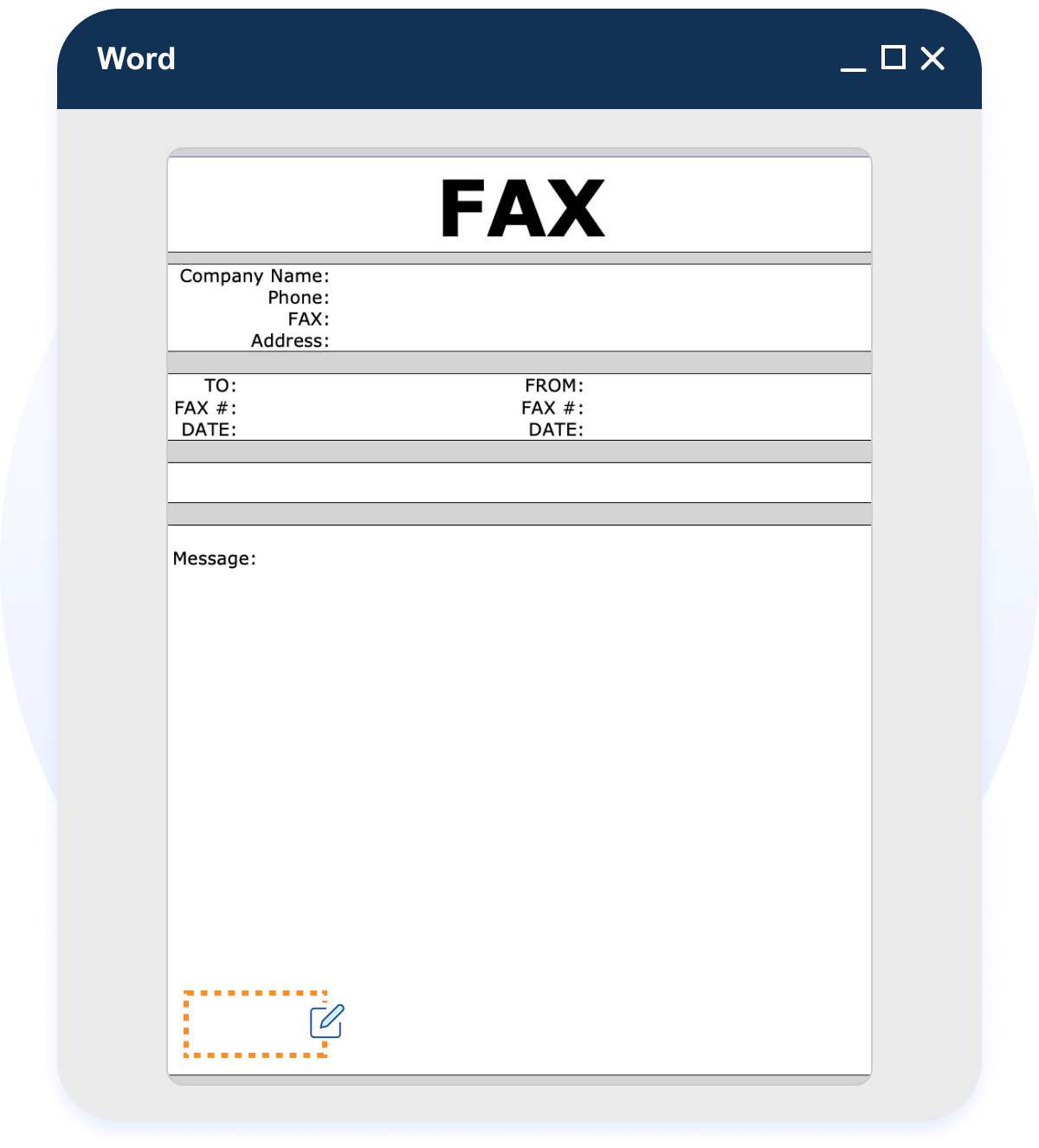
Faxing Made Easy with MyFax's Fax Cover Sheet Templates
MyFax is an online fax provider that gives you access to hundreds of printable fillable fax cover sheet templates you can use with your online faxes. Whether you’re sending a fax that requires a fax cover sheet confidentiality statement or only want your fax to look professional, we’ve got you covered. Using a fax cover page template will help you meet your goal. Sign up now to get started.
